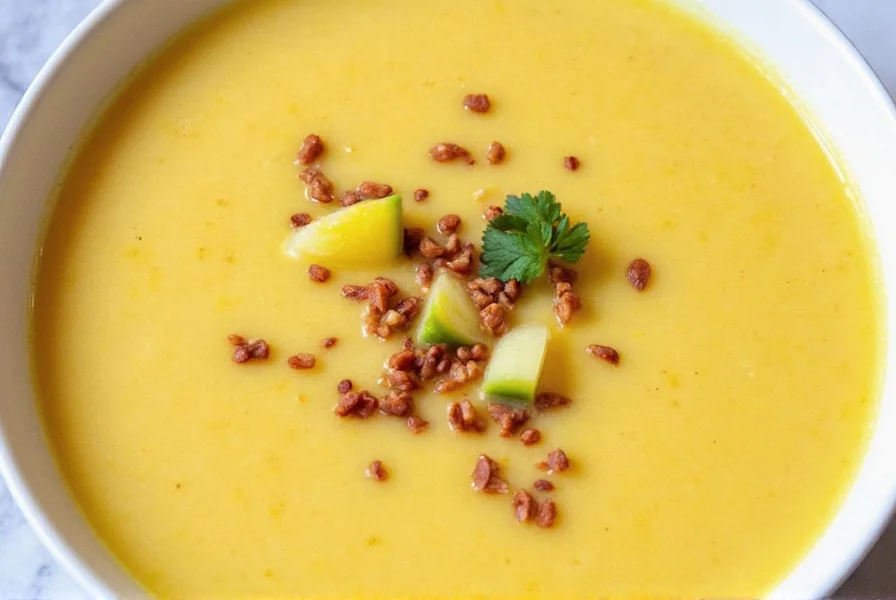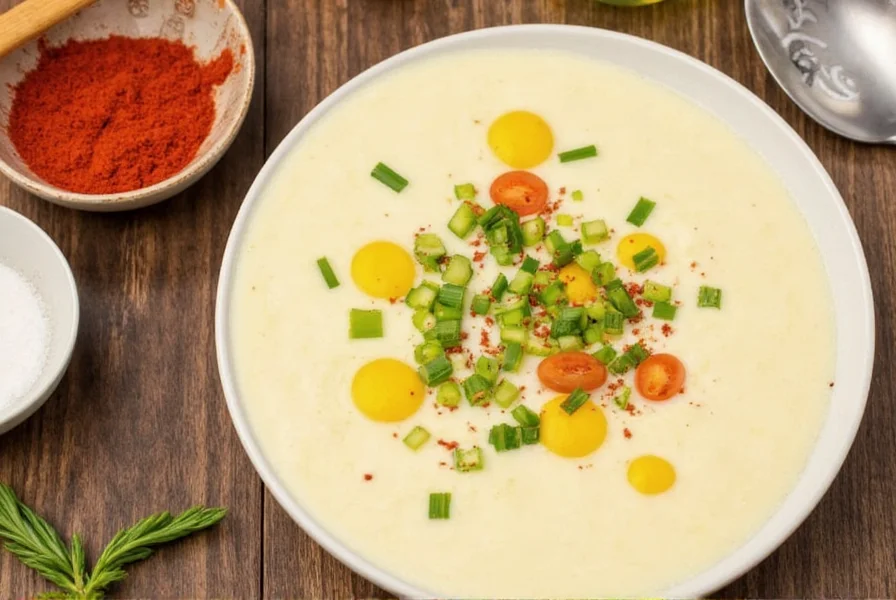What is Egg Drop Soup?
Egg drop soup, also known as "egg flower soup" in Chinese cuisine, is a simple yet comforting dish made by stirring beaten eggs into hot broth to create delicate ribbons. It's a staple in Chinese restaurants and home kitchens worldwide, known for its quick preparation, light flavor, and nutritional benefits.

Authentic Egg Drop Soup Recipe
Here's a simple, authentic recipe for perfect egg drop soup that takes just 10 minutes to prepare.
Ingredients
| Ingredient | Quantity | Notes |
|---|---|---|
| Chicken or vegetable broth | 4 cups | Homemade preferred for best flavor |
| Eggs | 2 large | Beaten well |
| Salt | 1/2 teaspoon | Adjust to taste |
| White pepper | 1/4 teaspoon | Traditional for light-colored soup |
| Sesame oil | 1 teaspoon | For finishing, not cooking |
| Green onions | 2 tablespoons, finely chopped | For garnish |
Step-by-Step Instructions
- Bring broth to a gentle simmer in a pot over medium heat. Do not boil vigorously.
- Add salt and white pepper to the broth, stirring to dissolve.
- While stirring the broth in one direction, slowly pour in the beaten eggs in a thin stream.
- Remove from heat immediately after adding eggs to prevent overcooking. The residual heat will cook the eggs into delicate ribbons.
- Stir in sesame oil and top with chopped green onions before serving.
Health Benefits of Egg Drop Soup
Egg drop soup is a nutritious, low-calorie dish that offers several health benefits:
- High in protein from eggs, supporting muscle health
- Low in calories (about 100 calories per serving)
- Hydrating and easy to digest
- Rich in vitamins and minerals from broth and vegetables (if added)
Common Mistakes to Avoid
Follow these tips to perfect your egg drop soup:
- Don't boil the broth too hard: A rolling boil will make the eggs tough and rubbery. Keep it at a gentle simmer.
- Don't overcook the eggs: Remove from heat immediately after adding eggs. They'll continue cooking from residual heat.
- Don't skip the white pepper: Traditional Chinese recipes use white pepper for its smooth flavor that doesn't discolor the soup.
- Don't add sesame oil during cooking: Add it at the end to preserve its delicate flavor.
Frequently Asked Questions About Egg Drop Soup
What's the difference between egg drop soup and hot and sour soup?
Egg drop soup is a simple, mild broth with egg ribbons, while hot and sour soup contains vinegar, soy sauce, mushrooms, tofu, and is spicier. Egg drop soup is lighter and less complex.
Can I make egg drop soup vegetarian?
Yes! Use vegetable broth instead of chicken broth and skip any meat-based ingredients. You can add tofu or mushrooms for extra protein and texture.
How do I prevent my eggs from becoming rubbery in egg drop soup?
To achieve silky egg ribbons: 1) Keep broth at a gentle simmer (not boiling), 2) Whisk eggs thoroughly before adding, 3) Pour eggs slowly in a thin stream while stirring in one direction, 4) Remove from heat immediately after adding eggs to let residual heat finish cooking.
Is egg drop soup gluten-free?
Traditional egg drop soup is gluten-free, but check broth labels as some store-bought broths may contain gluten. Use certified gluten-free broth if needed.
Can I add other vegetables to egg drop soup?
Yes! Add thinly sliced carrots, bok choy, or spinach for extra nutrients. Add vegetables before the eggs to ensure they're cooked through.
Final Thoughts: Perfect Your Egg Drop Soup Today
Egg drop soup is a versatile, nutritious dish that can be ready in minutes. With the right technique, you can create delicate egg ribbons that melt in your mouth. Remember to use fresh ingredients, control the heat, and finish with a touch of sesame oil for authentic flavor. Try this simple recipe and enjoy the comfort of homemade egg drop soup!











 浙公网安备
33010002000092号
浙公网安备
33010002000092号 浙B2-20120091-4
浙B2-20120091-4